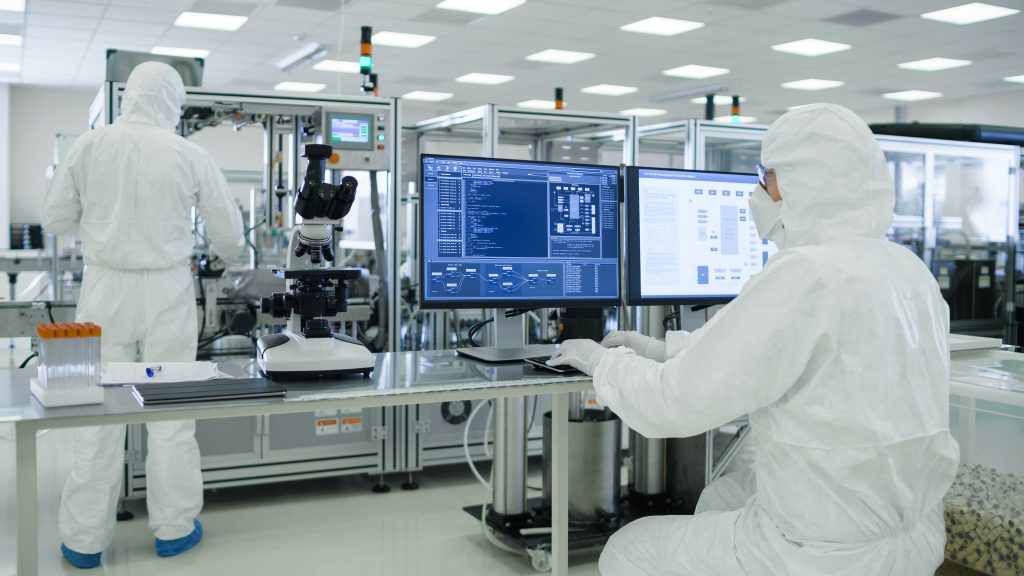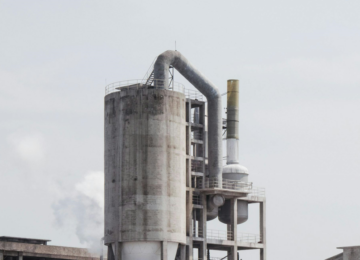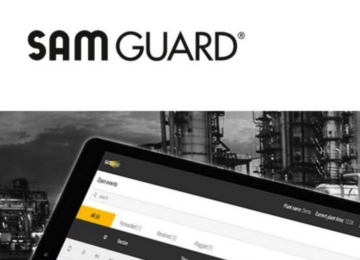May 18, 2021
By: Lyat Avidor Peleg
Digital Transformation & Industry 4.0 in Pharma

The move towards Pharma 4.0, which implements industrial Internet of Things (IIoT), robotic process automation (RPA), and industry 4.0 best practices into pharma processing plants and the broader pharma industry, has raced ahead in recent years.
It’s part of the wider trend of digital transformation in the industrial sector as a whole, which was accelerated across the board by COVID-19. The pandemic forced process plants to find ways to maintain operations under remote work conditions, meet changing customer demands, and cope with a fractured supply chain. Different verticals have reached different stages in the process, and are motivated by slightly different primary concerns. This post is part of a series in which we explore how digital transformation is affecting different industries. You can read our previous post about the oil & gas industry here.
The State of Digital Transformation in Pharma
Pharmaceuticals was one of the fastest-changing industries in 2020, with adoption of new digital technologies dropping from years to weeks or even days during the pandemic. The pharma industry as a whole is predicted to spend over $4.5 billion on digital transformation by 2030, growing by CAGR of 27%, and expectations surrounding its impact are high.
Executives hope that smart, connected factories could deliver savings of 20% or more, including a drop of 17% in costs related to poor quality product and 14% in delivery reliability. McKinsey predicts that pharma 4.0 could boost production by up to 200% compared with today’s capabilities, and notes that digitization and automation have driven reductions of over 65% in overall deviations, 90% in closure times, and 60-90% in testing lags.
However, pharma is still a long way behind industry leaders like retail in terms of digitalization. Pharma plants are plagued by data silos, broken audit trails, lack of optimization for equipment and processes, and an astonishing amount of paper records across the ecosystem.
The report by ABI Research concludes that “currently, pharmaceutical manufacturers are at Stage 2 in that they have modern factory but lack foresight and struggle to adjust production, or Stage 3 where they have started to implement digital transformation but lack expertise reconfiguring production lines. In the coming decade, many firms will upgrade their existing facilities or build greenfield sites, and their operations will be digitally transformed (Stage 4) or operate without humans on-site (Stage 5 – lights out manufacturing).”
Key Trends in Digital Transformation in the Pharma Industry
Pharma is a highly competitive sector, and the rise of contract developing manufacturing organizations (CDMO) creates an even fiercer race to lower costs while raising product quality. The CDMO market is predicted to grow from $90 billion in 2019 to $117.3 billion in 2023, making it one of the biggest pharma trends.
The median cost of developing a new prescription drug and bringing it to market is around $985.3 million, rising to $2.7 billion for today’s customized medications for specialized areas like immunomodulating agents, and it continues to grow by 10% each year. The last few years saw a rise in personalized, patient-centric medicine, which leads to smaller, more frequent drug launches and more complicated drug requirements, and in turn creates more cost and complexity for pharma production.
Once medications leave patent, profits drop significantly, placing pressure on pharma plants to make the most of miniscule profit margins. It’s estimated that loss of exclusivity (LOE) will cause around $30 billion of loss to the pharmaceutical industry by the end of 2021.
As a result, pharma companies are determined to keep production high to maximize profits from trademarked drugs while they are still under patent, and work hard to drive down the price they’ll pay for out-of-patent drugs. Pharma process plants are turning to digital solutions to cut costs, reduce waste, and ensure consistent product quality, so they can meet market demands and still remain profitable.
Advanced Analytics Raise Product Quality, Improves Performance, Lowers Costs
Pharma manufacturing plants face a tension between the desire for continuous manufacturing, to make the best use of resources and equipment, and the need to monitor quality. They need to be able to quickly and accurately recall any product that falls short of standards, whether that’s due to errors in the process, contamination in the raw elements, or poor quality among the partially-processed components.
Digital analytics solutions gather real-time or near real-time data from every corner of the plant, constantly monitoring processes, equipment, and raw material quality. If product does need to be recalled, big plant data creates an audit trail to identify affected batches and reduce the extent of the recall.
Advanced, AI-powered solutions such as predictive analytics produce early alerts about anomalies which could indicate a drop in product quality or impending part failure. This enables plant managers to fix the issue before large amounts of product are affected or machinery breaks down, reducing production loss and preventing expensive repairs. AI analytics solutions open up real-time visibility into operations, revealing spot performance gaps and helping identify root causes. Greater plant transparency underpins faster reaction times when incidents arise, and elimination or mitigation of bottlenecks to boost agility for last-minute changes in production volume, without compromising on quality or inflating costs.
Unified data platforms automatically gather and share data with internal and external stakeholders, increasing understanding of the customer, changing market demands, and performance capabilities within the plant itself.
The most advanced plants are transitioning to automated data gathering and data sharing between equipment and laboratory information management systems (LIMS), which check samples, diagnose issues, and suggest remedies. This creates smart factories that can predict the outcome of each batch, self-diagnose performance issues, and self-correct errors.
Distributed Quality Testing to Meet Regulations
The pharmaceutical industry possibly faces more regulations and compliance hurdles than any other industry, with safety, efficacy, quality, environmental, and governance requirements arising and altering all the time. Plants need to meet a consistently high quality, and leaving testing until the final stage increases the risk of having to discard multiple batches and start over. Product recalls can cost plants millions of dollars in lawsuits and even more in terms of their damaged reputation.
COVID-19 restrictions that reduced occupancy in testing labs gave pharma plants the push to shift to remote, automated quality testing for issues like microbial levels, so analysts aren’t required on site. Once testing is automated, it can be applied upstream, helping plants move towards an integrated testing structure which constantly checks for quality throughout the process. McKinsey reports that digital transformation could prevent major compliance issues that cost plants millions of dollars to correct.
Better Traceability for a Unified Supply Chain
Pharma plants preside over complex, disparate, and highly regulated supply chains, with both raw materials and partially-processed components arriving from across the globe. Digital transformation allows plants to trace the entire supply chain so as to track the provenance and transportation conditions of every element, every step of the way, to be sure of the expiry date and quality of each one. In December 2020, for example, Pfizer was forced to revise delivery figures for its COVID-19 vaccine from 100 million to 50 million units, due to challenges with raw materials’ supply.
Many products also need to be delivered to the customer under specific conditions, such as cold chain, or within a limited time frame, or both. Pharma companies are looking to blockchain, as well as integrated data sharing and remote tracking tools, to improve visibility and traceability across the supply and distribution network.
Smart Glasses to Streamline Manual Actions
With the rise of small batch orders, pharma production teams need to reconfigure the plant to switch between products more often, driving adoption of advanced changeover support that reduces downtime between batche, and removes errors in configuration.
Smart glasses and 3D video simulations guide operators through defined procedures to ensure that they follow the correct protocols every time, cutting the risks of human error and speeding up the entire process. Smart glasses also allow employees to “see” issues within the system without entering hazardous areas or even being present at the plant, supporting remote troubleshooting, faster decision-making, and speedier maintenance. Often smart glasses permit employees to resolve issues without needing to stop production.
Digital Twins and Augmented Reality For Data-Driven Decision Making
Digital twins are an accurate reproduction of the entire plant in virtual form, so that process engineers and other stakeholders can view every level of every process. With digital twins and augmented reality, they can simulate different scenarios, like speeding up production, adding another product line, expanding production capabilities, or altering operation hours, and view the likely impact of each change.
In this way, pharma plants can access data-driven answers to questions about fluctuating demand and equipment lifecycle, for example, and optimize operations for maximum profits and minimum disruption. Digital twins also enable plants to predict scenarios that could hold back production, track logistics for supplies and deliveries, and identify elements of the value chain that most need attention.
Autonomous Production to Remove Errors
Plants riding the cutting edge of pharma 4.0 are already introducing autonomous robots that can take over significant parts of the production process. The robots connect with a central AI-powered database that uses big data and machine learning (ML) to “teach” each bot which tasks to perform and how to do them correctly.
Some of the use cases include transporting materials to specific areas of the plant, coordinating items of equipment, and completing repetitive jobs that don’t require human intelligence. As plants grow accustomed to autonomous production, more use cases will become evident and more tasks will be handed over to AI bots.
What is Holding Back Pharma 4.0?
One of the biggest factors hampering the implementation of pharma 4.0 is the large and growing talent gap. A lack of skills is the third-top obstacle for pharma companies trying to complete their digital transformation, yet just one third have begun reskilling efforts and even those which have only covered under 10% of their workforce. Many companies don’t even know the extent of their skills gap. Only 40% of companies feel confident they know which skills they need today, and just 25% say they know what they’ll need in 10 years time.
Unfortunately, it seems that many pharma plants are wasting their talent. Digital natives brought into the pharma industry are often trained to use paper-based workflows, squandering the opportunity to drive a culture shift.
Another issue is the existence of legacy infrastructure and difficulty integrating new and existing data systems together, cited as the main difficulty by 85% of executives. Like many other operations-intensive industries, pharma is still struggling to scale up out of pilots and implement cutting edge solutions across the plant.
Pharma Struggles to Make Up Ground in Digital Transformation
The pressure of COVID-19, changes in trends for personalized medication, and rising regulations are all driving adoption of pharma 4.0. Pharma processing plants are handicapped by ongoing talent gaps, lingering data silos, inefficient, non-digital workflows, and non-compatibility between legacy and newer platforms, but they have come a long way in the past couple of years and are working hard to pick up the pace.






